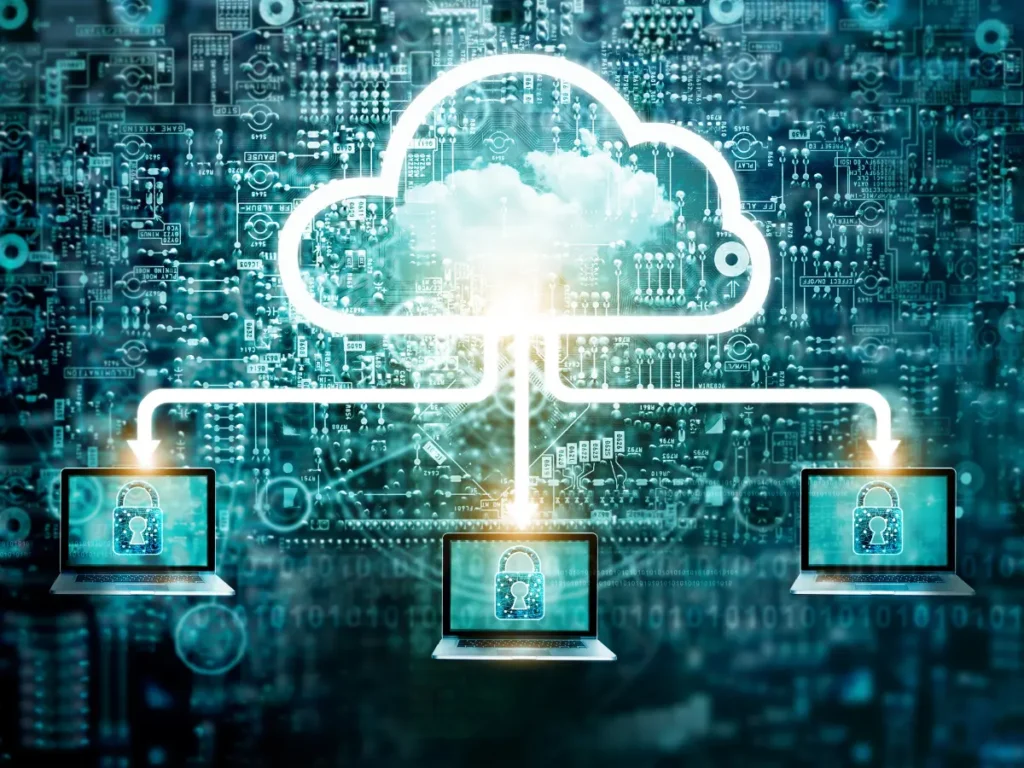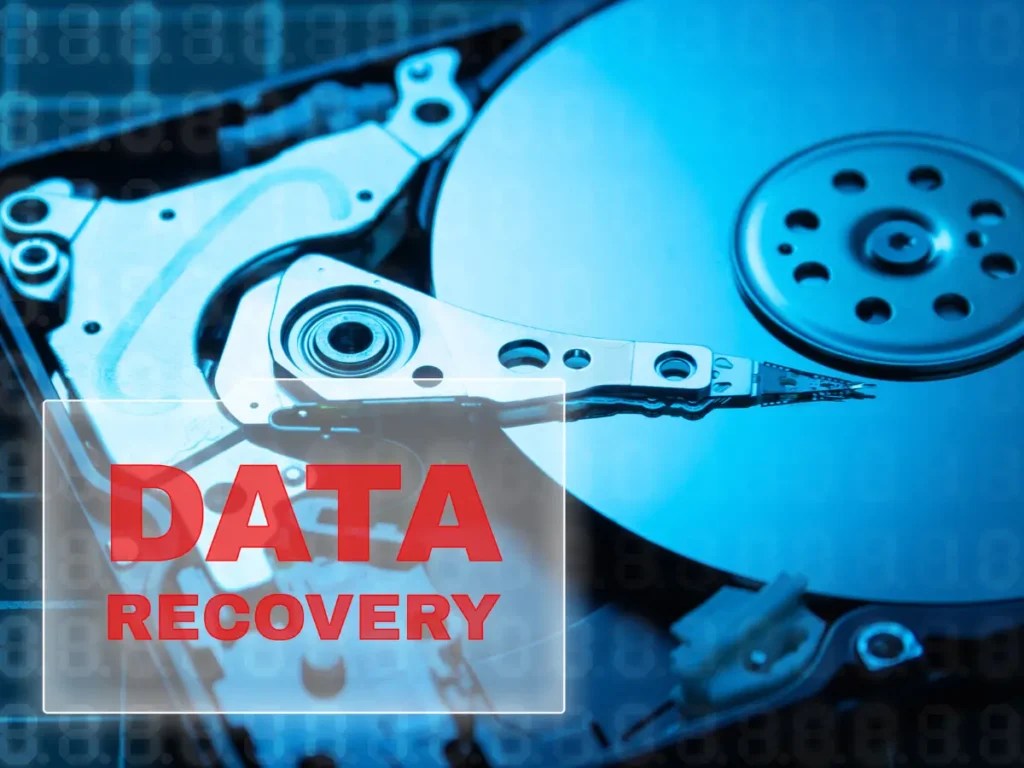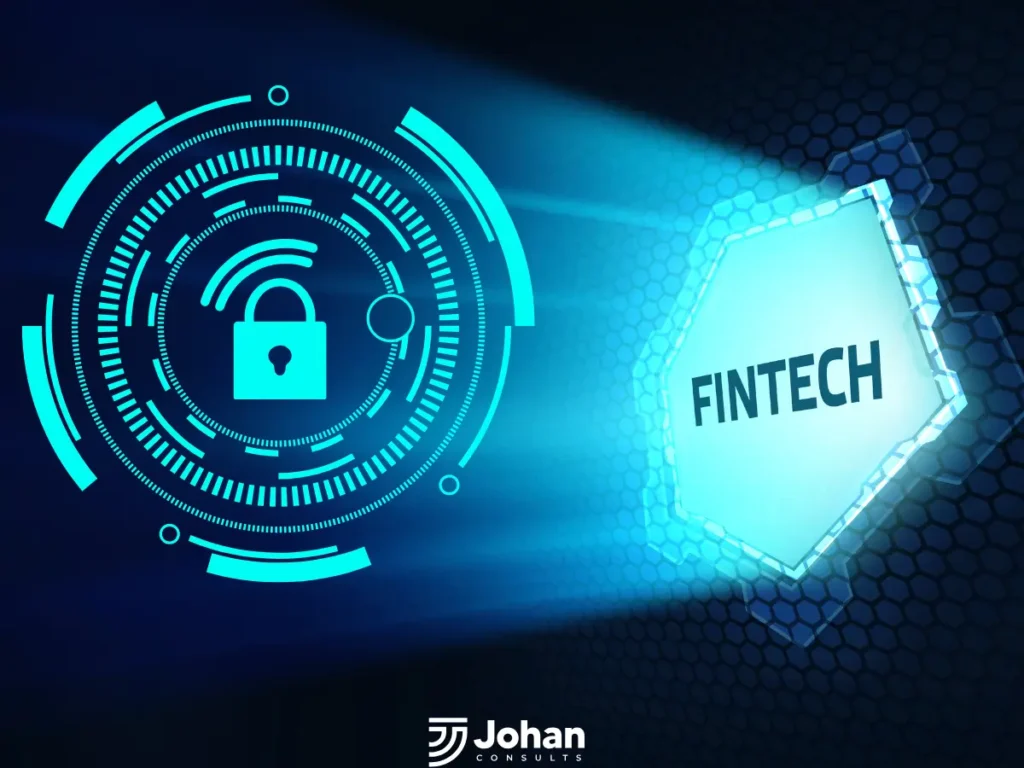Cloud Security Best Practices for Kenyan Startups

Cloud security refers to the policies, technologies, and controls deployed to protect data, applications, and infrastructure in cloud computing environments.
All You Need to Know About the IT Data Recovery Plan

A Data Recovery Plan is a documented strategy that outlines how your organization will respond to data loss events.
Best Cybersecurity Companies to Work with in 2025

Explore top cybersecurity companies in Nigeria, Kenya & Tanzania in 2025. Find trusted partners to protect your fintech or tech business from threats
Data Leakage Protection: The #1 Overlooked Security Risk

As an organisation, you will gather, process, use, and store data—both consumer data and the enterprise’s own data (financial reports, marketing strategies, employee information, etc.). But you’re at risk of constant data leaks, and a data leakage protection system is important to prevent reputational damage, financial loss, and legal consequences. What is Data Leakage Protection? Data leakage protection is the total cybersecurity processes and technologies used to protect sensitive data and business information from loss, corruption, deletion, and, above all, leakage. Similar to data loss prevention, it’s an all-round cybersecurity measure that ensures organisations keep their data in and simultaneously avert the negative consequences of data compromise. Additionally, data leakage protection (DLP) ensures enterprises maintain compliance with relevant data regulations, e.g., GDPR and NDPA. What Is a Data Leak? A data leak happens when sensitive information is accidentally and unintentionally exposed to unauthorised parties. Data leaks can occur via the internet, physically through devices, or as simple as sending emails to the wrong recipients. Although the term sounds similar to ‘data breach,” where data leaks are usually accidental, data breaches result from malicious intents, especially from the outside. What causes data leaks? Data leaks are commonly caused by poor data security that allows just anyone through, weak or stolen passwords, a lack of employee training, and even physical attacks. But data leaks happen in one of the following ways: Accidental Data Leaks: most data leaks are intentional and occur from mistakes such as sending sensitive mail to the wrong recipient(s). Some happen due to wrong data security settings that usher hackers in. Insider Threats: Like data protection in the fintech industry, insider threats remain a stumbling block to cybersecurity. A current or former employee or contractor with access to sensitive information may decide to leak it for malicious intent. Malicious Attacks: To gain access to sensitive data, cybercriminals use several technologies to attack the organisation’s database. These cyberattacks come in the form of malware, ransomware, and phishing attacks. Once unauthorised access is gained, data exfiltration takes place. Why is Data Leakage Protection Important? It doesn’t matter whether it’s customer details, financial documents, or even business plans; once data lands in the wrong hands, severe consequences follow. First is reputational damage; clients will lose trust in the brand, leading to drawbacks in the order of business. Second, for every occurrence of a data breach, fines and sanctions are imposed by data regulation. Take, for example, when the NDPR fined fidelity bank for a data breach. These setbacks incurred from data leaks and breaches destroy business deals and jeopardize more opportunities for the victim company. Now, digital transformation makes protecting data difficult; every company prefers remote work, and cloud storage is the main deal now. This puts data security in a delicate situation because these serve as an entrypoint for data breaches. Therefore, businesses must come up with a data leakage protection policy that guards against data loss or leakages. How Does Data Leakage Protection Work? A data leakage protection solution works by scrutinizing the content and context of data moving in, out, and around the organization. It’s an absolute analysis that includes emails and even data sent through text messages. Safe to conclude, a data leakage protection system carries out:Content Analysis: where the solution uses a variety of tools and techniques to ensure the specific content of messages and internet traffic meet the predetermined policies. Context Analysis: the scrutinisation of external factors such as file size and format of a message. Once a data leakage solution senses the data doesn’t meet the set requirements, it prevents such data from leaving the organization. At the same time, it alerts the data security team of a potential data leak or loss. Here are some of the techniques most DLP solutions use: Categorisation: Examines data types to detect sensitive information and prevent potential compliance risks. Exact file matching: compares unique file signatures to identify identical data sets precisely. Partial data matching: identifies complete or partial matches of specific file contents. Statistical analysis: Applies advanced machine learning techniques to automatically detect and flag potential data leak risks. Regular expression matching: scans for specific data patterns like credit card numbers (16 digits), Social Security numbers (9 digits), and other structured information formats. What Are the Features of a Data Leakage Protection (DLP) Solution? Data leakage protection (DLP) solutions are comprised of cybersecurity tools designed to prevent unauthorised data exposure and safeguard sensitive information across an organisation’s system. Here are the 7 key features of an effective Data Leakage Protection (DLP) solution: Benefits of Data Leakage Protection The benefits of a data leakage protection system are numerous and straightforward. Conclusion Data leaks happen unintentionally but they are preventable. Investing in a comprehensive data leakage protection system enables the organisation to curb data loss or leaks. Summarily, the importance of data leakage protection in cybersecurity is immeasurable, as it prevents breaches and boycotts legal penalties from data regulations. Frequently Asked Questions What’s the difference between data leak and data breach? Data leaks are often unintentional and may result from inside the organisation, while data breaches are malicious in nature. What’s the difference between data leakage protection and data loss prevention? Data loss prevention primarily focuses on preventing data from being accidentally or intentionally lost, destroyed, or rendered inaccessible. While Data Leak Protection specifically targets unauthorised data exposure or transmission outside organisational boundaries. What does DLP stand for? DLP may stand for data leak prevention, data leakage prevention, data leak protection, data loss prevention, or data loss protection
Data Loss Prevention (DLP): The Silent Killer of Your Business

The consequences of data loss have never been higher; data must be shielded at all costs. So, this blog provides more information on the prevention of data loss. What is Data Loss Prevention? Data loss prevention (DLP) is the process of detecting and preventing data breaches, exfiltration, and even misuse by using cybersecurity strategies, processes, and technologies. The root of this equation is data; it’s a common factor for all businesses and organisations worldwide. What’s it used for? A typical organisation (business or not) keeps client data—personal, sensitive, etc., for record keeping, transaction processing, marketing, and competitor analysis. Cybercriminals use this data for varying reasons, majorly money-driven. While organisations keep them for ease of business and eventually increased profitability, cybercriminals make money off data through financial frauds, identity thefts, etc. The landscape further worsens with each technological advancement. Now, thousands of authorised users access the company’s database through cloud and on-premises facilities. Therefore, there’s a need to implement strategies to prevent data loss. With DLP, organisations detect data threats faster than usual. How? It tracks data throughout the system and implements security policies on that data. Organisations typically use DLP to: Why is Data Loss Prevention Important? Data is never safe; it doesn’t matter if it’s in use or at rest, making data protection and security complicated. Despite the stress, data loss prevention is the best step. Why? The costs of data loss surpass the technicalities of its prevention. According to the cost of a data breach report by IBM, the average cost of a data breach reached USD 4.88 million, a 10% jump from the previous year. Protecting data, particularly personal identifiable information (PII), became more difficult because data may be used and stored in several formats in multiple locations across various departments. Therefore, there’s a need to monitor each data point and enforce the necessary policy for it. Given the vulnerable nature of data, an ideal data loss prevention system must be able to monitor data when Types and Causes of Data Loss Data loss is often defined as events of data breaches, data leakages, or data exfiltration. Though used interchangeably, these terms have distinct meanings. Data breach: A data breach is any incident that leads to unauthorised access to data. Under this, we have cyberattacks and other incidents that allow unauthorised access to sensitive information. Data leakage: Like the name leakage, data leakages include accidental exposure of sensitive information to the public. This can occur from procedural security errors from both electronic and online transfers. Data exfiltration: This is any theft where the attacker (hacker) successfully moves stolen data to a device under his control. Data exfiltration cannot occur without a breach or leakage, but not every breach/leakage leads to exfiltration. Since data loss has been defined and categorised, let’s see its causes There are 3 Common Causes of Data Loss Cyberattacks Malicious actors target data all the time—relentlessly. To help their cause, they employ several techniques such as phishing, malware, and ransomware. These are the prevalent types of cyberattacks Insider threats Authorised users, such as staff, third parties, stakeholders, providers, etc., might put data at risk through carelessness and malicious intent even. It’s as simple as not updating passwords or even carelessly revealing sensitive enterprise data, etc. while using public networks. Malicious or not, insider threats remain very costly considering IBM’s report. Smartphone or PC theft An unattended device attracts thieves. It doesn’t matter if the thief pawns off the device; the organisation suffers the cost of cutting the stolen device off and replacing it. On a serious note, such incidents grant malicious users direct access to confidential or sensitive data. Data Loss Prevention Policies One thing about DLP is the wide coverage, from data classification, access control, and encryption standards to technical controls. With data loss prevention policies, the standard is clear: employees know their duties regarding data protection and security. In addition, it allows for proper staff training on data security best practices such as threat identification, data handling, and incidence reporting. Also, rather than a generalised security approach, with DLP, data is classified, and implementing appropriate security protocols for each group becomes easier. For example, handling PII (personally identifiable information), such as credit card numbers, social security numbers, etc., is subject to certain data security regulations. Meanwhile, the company can choose to do whatever with its own intellectual property (IP). These types of data require different security procedures; hence, tailored DLP policies are necessary. The Types of DLP Solutions It’s important to understand the different facets of data loss prevention for better comprehension. There are 3 types of DLP: Network DLP Network DLP solutions monitor how data moves through—in and out—networks. With tools like artificial intelligence (AI) and machine learning, they flag anomalies that signal data loss in a network. Although network DLP solutions monitor data in motion, many check data in use or at rest too. Endpoint DLP Endpoint DLP tools monitor data use activity on laptops, mobile devices, servers, and other devices accessing the network. These solutions are directly installed on the devices and even go the extra mile to block unauthorised data transfers between devices. Cloud DLP Cloud security solutions focus on data stored in and accessed by cloud services. They scan, classify, monitor, and even encode data in cloud repositories. Particularly, these tools help implement access control policies on individual end users and any cloud services that might access company data. How DLP Works DLP is typically a 4-step procedure for many security teams. The steps are:
What Does Data Security Mean for Fintech Companies in 2024?

Data security is a major concern for every business in every industry, fintech inclusive. For enterprises in other industries, securing data might be an afterthought, but fintech companies do not have that luxury. In this blog, we’ll go over data security and what fintech security looks like in 2024. The nature of data the financial sector handles is too delicate to handle without a proper security system. We’re talking about credit card numbers, age, addresses, bank account numbers, etc. The damage one successful data breach can cause can’t be imagined. What’s data security? Data security is the process of safeguarding data against external threats to it’s confidentiality, integrity, and accuracy. Fintechs have to consider data security to fight against the constant and ever-evolving barrage of cyber threats. Besides cyberattacks, regulatory bodies like the GDPR mandate data security as a sign of compliance. So, to be on the safer side, every fintech needs to up their security game. Fintech Security: Overview of the Landscape The condition of fintech security is dire; in the first quarter of 2024 alone, lots of fintech companies became victims of malicious actors. The reality of these statistics further worsens as the onslaught of these attacks becomes more vicious with time. Cybercriminals come up with newer and better technologies faster than the fintech industry; it’s a wonder how we have any fintech companies left. For example, consider the use of artificial intelligence. While it’s a development with plenty of benefits, cybercriminals found use for it. With AI technology, malicious actors scan the data security system of the target company and find weak links frequently. The advancement of this tech makes it easier for them to compromise the system and wreck havoc undetected for a long time. Also, there are laws established to regulate data security like the GDPR, PCI-DSS, NDPA, and so on. With these come stringent rules like the GDPR requirements. So, aside from data breaches, reputational damage, loss of consumer trust, and poor fintech security attract fines and penalties from data protection laws. Nevertheless, the financial industry constantly puts up a fight—albeit not enough—and we look forward to better data security technologies. Now, let’s move forward. What does data security mean for fintech companies in 2024? Here’s a better breakdown of the fintech security landscape. Advanced Threat Detection and Prevention Yes, cybercriminals like hackers attack with more sophisticated technologies. But fintech companies counterattack with a better principle: prevention. Now, financial institutions employ technologies like AI that allow them to monitor their systems for suspicious activities. These tools act like a smoke detector in the sense that, before a data breach occurs, they alert the organisation of its potential. This way, cyber threats like ransomware and phishing are cut short before they cause damage. Although AI is a useful tool, fintech companies need to maximise its potential. How? By developing more AI models that predict vulnerabilities in the system rather than just detecting attacks in progress. That way, they can strengthen their weaknesses and give swift responses to cyber threats. Compliance with Regulations Fintech security got tougher with the enactment of several data protection laws. Governments are clamping down on personal data protection, and there are consequences to non-compliance. For instance, in the EU, organisations answer to the General Data Protection Regulation (GDPR) and it’s stringent requirements. The law enforces a large amount of money as a fine, and that’s on a lighter note. Apart from territorial laws, each industry has its own set of regulations, and the number keeps increasing. To keep track of compliance with the many laws, the best thing to do is hire a data protection service consultancy. These are organisations that help businesses achieve maximum compliance with data protection regulations. At Johan Consults, we carry out a detailed assessment of your company’s security system, measure it against the requirements, identify your weaknesses, and provide solutions to them. Contact us now for a free 30-minute consultation. Zero Trust Architecture Like the name implies, this data security model works on a “never trust, always verify” principle. Usually, any user or device in a fintech company can access all data held, but this principle kicks against it. This new practice now insists on proper verification before data can be accessed. It’s more like having to use an ID to enter a room in a secure building. The benefits of this architecture are many. Now, each employee, user, or device can access only the data they’re allowed, and lots of data breaches have been detected. End-to-End Encryption and tokenisation Since a data breach seems unavoidable, fintech security adapted to the terrain. Now, fintech companies employ data security practices like encryption: turning data into secret codes unreadable without the key, and tokenisation: replacing characters in data with random characters, e.g., replacing digits with asterisks in credit card numbers. So even if hackers get the data, they can’t access it. These practices keep payment information and other sensitive personal data from unauthorised access. User Awareness and Education Fintech companies understand that data security goes both ways: for the company and its customers. While individuals rely on the companies to protect their data, they fail to acknowledge their contributions. In 2024, fintech companies are changing the narrative by organising programmes that teach customers how to prevent breaches. Users are educated on how to spot phishing attempts and suspicious links and reduce the risks of being hacked by using multi-factor authentication. Identity Verification and Biometrics Fintech security in 2024 is tighter than ever before with the introduction of identity verification and biometrics. Fintech companies now use more than just passwords to verify identities. There are behavioural analytics that check and record how a user interacts with the system, which makes it harder for hackers to impersonate victims. In addition, they might require a fingerprint, analyse a typing pattern, or even the way someone holds their phone. It’s all for added security, and it’s yielding the desired results. Cloud Security and Data Sovereignty Instead of physical servers, many companies opt for cloud storage for data-online storage.


